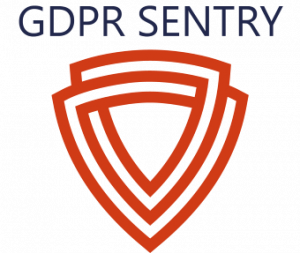Let me start with a little story.
Picture this: a well-meaning school rolls out a shiny new classroom app. It promises real-time behaviour tracking, AI-generated performance reports, and parental push notifications.
Everything’s going swimmingly until a parent complains. Loudly. They’re uncomfortable with how much data the app’s collecting on their child. A few emails later, and suddenly the Information Commissioner’s Office (ICO) is poking around.
So, where did it all go wrong?
No DPIA.
First, What on Earth is a DPIA?
Let’s demystify this acronym. A Data Protection Impact Assessment (DPIA) is like a risk assessment, but for privacy. It’s a tool that helps you think before you process, especially when new tech, processes, or systems, might affect individuals’ data rights.
The legal bit? Under the UK GDPR, DPIAs are mandatory when data processing is likely to result in a high risk to people’s rights and freedoms.
But let’s not get too stuck in legalese. As your friendly neighbourhood Data Protection Officer (DPO), we like to think of a DPIA as the grown-up version of “have you thought this through?”
When Do You Need a DPIA in Schools?
You’d be surprised how often this question crops up. DPIAs aren’t just for massive corporations or government surveillance programs. Schools sit on mountains of personal data, much of it about children, which immediately raises the stakes.
Here’s a peek into your school diary where a DPIA might be needed:
- Rolling out biometric systems for canteen payments or library check-outs. (Yes, even fingerprint scanners.)
- Using facial recognition for school entry or attendance tracking.
- Launching new apps or platforms that monitor student behaviour, learning analytics or mental health.
- Installing CCTV in new areas, especially if it records audio or is placed in sensitive areas like SEN rooms.
- Conducting large-scale surveys on pupil wellbeing that include special category data (health, ethnicity, etc.).
Notice the pattern? If it’s new, high-tech, or deals with sensitive data, your DPIA-senses should be tingling.
But How Do You Actually Do a DPIA?
Now we’re into the meat of it. Here’s how I’d talk through a DPIA with a member of staff; let’s say the Deputy Head has just discovered an amazing classroom management tool from the USA.
DPO: “Okay, tell me what this thing does.”
DH: “It tracks behaviour points, syncs with parents, analyses learning patterns, and adjusts tasks based on performance!”
DPO: “Cool. What kind of data does it collect?”
DH: “Names, behaviour logs, test scores… oh, and it uses webcam input to assess engagement…”
DPO: deep breath “Right. Time for a DPIA.”
A proper DPIA goes something like this:
- Describe the Project and Purpose
Lay it out like you’re explaining it to someone outside education. What are you doing, why are you doing it, and what data are you using?
- Assess Necessity and Proportionality
Is there another way to achieve the same goal with less data? Are you collecting only what you need? (You’d be surprised how many tools hoover up data they don’t actually use.)
- Identify and Assess Risks
Here’s where it gets juicy. You look at:
- Risk of data being hacked or leaked
- Risk of data being used beyond its intended purpose
- Emotional or psychological risk to students (especially vulnerable ones)
- Risk to staff if their data is included
- Risk from poorly vetted third-party vendors
- Identify Mitigations
You don’t just throw up your hands and walk away. You work out how to reduce the risk. Encryption? Access controls? Parental consent? Staff training? Less data?
- Consult if Necessary
Got a DPO? Use them. Got students or parents involved? Ask them for input. Consultation shows accountability.
- Sign Off and Keep It On File
A DPIA is not a dusty form. It’s a living document. It should be stored and updated as the project evolves.
DPIA in Action: The Wi-Fi Watcher Incident
One real-world example (with details changed to protect the innocent): A secondary school wanted to monitor student internet usage more closely. They installed new software that logged all online activity, including personal emails and searches.
They skipped the DPIA.
A student complained when their anxiety-related search history was flagged and discussed by a teacher. The school faced backlash for over-monitoring and mishandling sensitive data.
Had they done a DPIA, they might have caught the issue early:
- The system didn’t distinguish between schoolwork and personal browsing.
- No consent was sought for monitoring beyond curriculum tools.
- No clear policy existed for how flagged data would be handled.
With a DPIA, they could have:
- Restricted logging to school hours or curriculum websites.
- Built in student safeguards.
- Created transparent policies with student involvement.
Why DPIAs Matter in Education
Ultimately, DPIAs aren’t about red tape. They’re about people. In schools, that means kids, often vulnerable, always trusting, and the staff who support them.
Done right, DPIAs do three things:
- Protect students and staff.
- Prevent costly (and embarrassing) missteps.
- Build trust with your community.
Think of DPIAs like risk assessments for ideas. If you wouldn’t bring an untested experiment into your science lab, why let an untested data process into your school?
So next time someone in your school says, “We found this amazing new app!” just smile and say:
“Great! Let’s DPIA it.”
Because the devil?… It’s always in the details.










